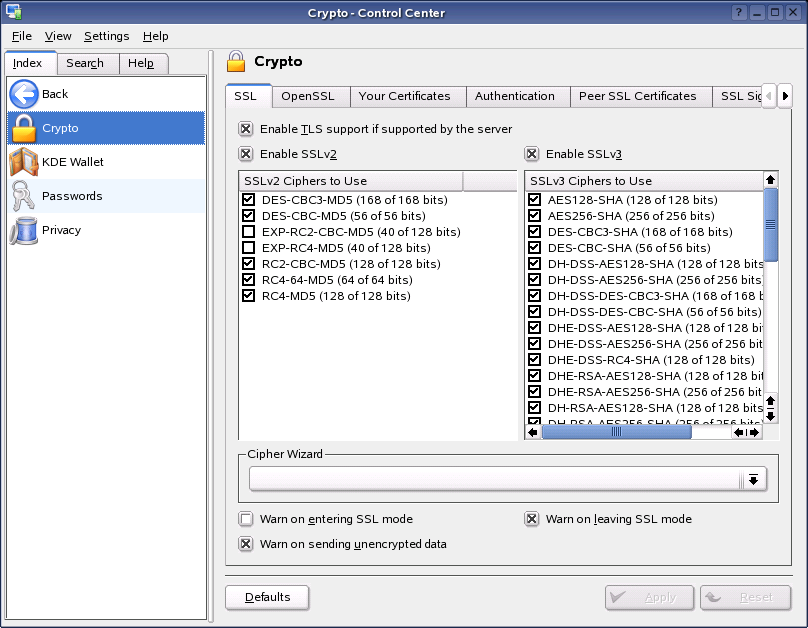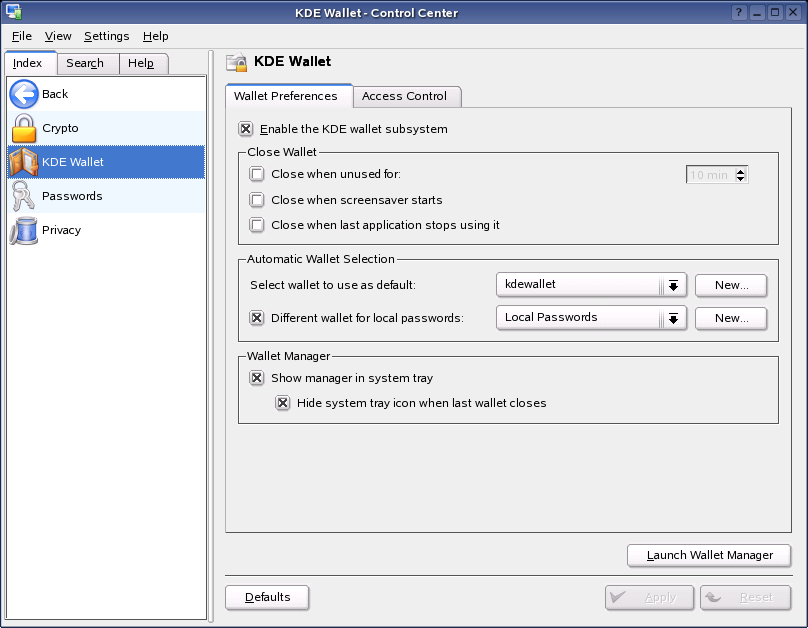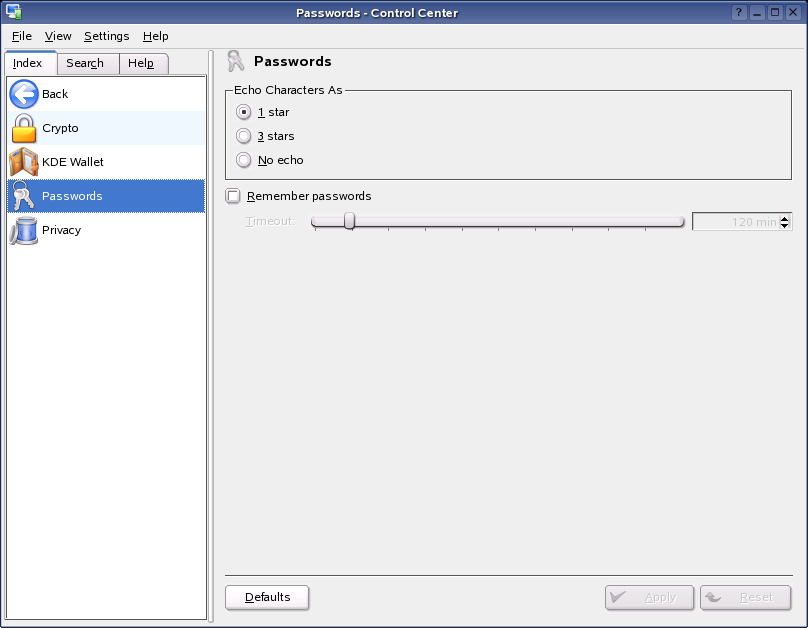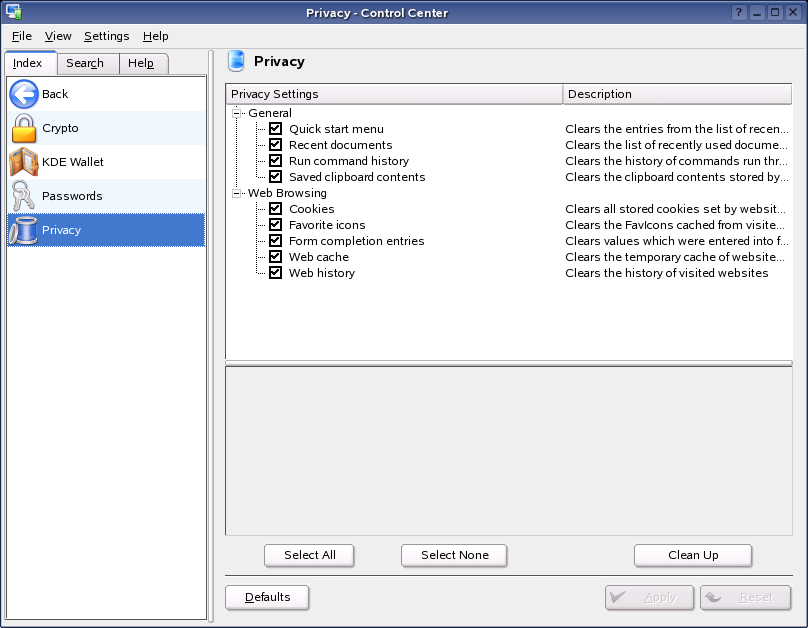3.8 Security & Privacy Settings
Use the settings under the Security & Privacy category to manage your personal security certificates, configure KWallet, control the way passwords are treated, and clear privacy settings such as Web histories and browser caches.
3.8.1 Configuring Encryption
Click .
This module lets you configure SSL (Secure Sockets Layer) for use with most KDE applications, and manage your personal certificates and the known certificate authorities.
Figure 74 KDE Control Center Crypto Dialog

3.8.2 Configuring the KDE Wallet System
Click .
Use this module to configure the KDE Wallet (KWallet) system. KWallet saves sensitive information (such as passwords, cookies, and form data) for you in a strongly encrypted file, accessible by all applications, and protected with a master password that you define.
Figure 75 KDE Control Center KDE Wallet Dialog

For more information on using KWallet, see Managing Passwords with KWallet Manager.
3.8.3 Configuring Passwords
Click .
This module lets you configure the way in which the kdesu program treats passwords. Kdesu will ask you for a password when you try to carry out some privileged actions, such as changing the date and time stored in your system clock, or adding new users on your computer.
Figure 76 KDE Control Center Passwords Dialog

You can configure the type of visual feedback given when you type a password, and whether kdesu should remember passwords for some time after you have given them.
These settings affect only kdesu. This means that the behavior of passwords in KMail and other programs cannot be configured here.
3.8.4 Configure Privacy Settings
Click .
Use this module to erase traces that KDE leaves on the system, such as command histories or browser caches.
Figure 77 KDE Control Center Privacy Dialog
